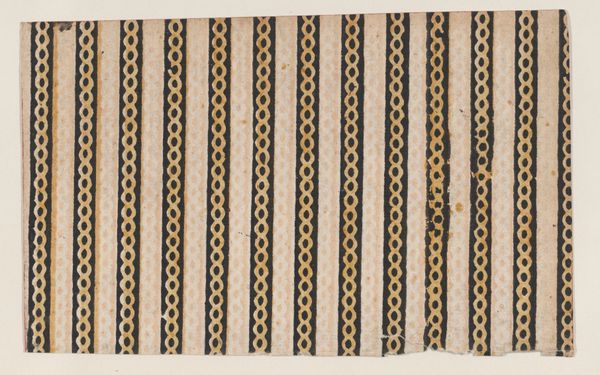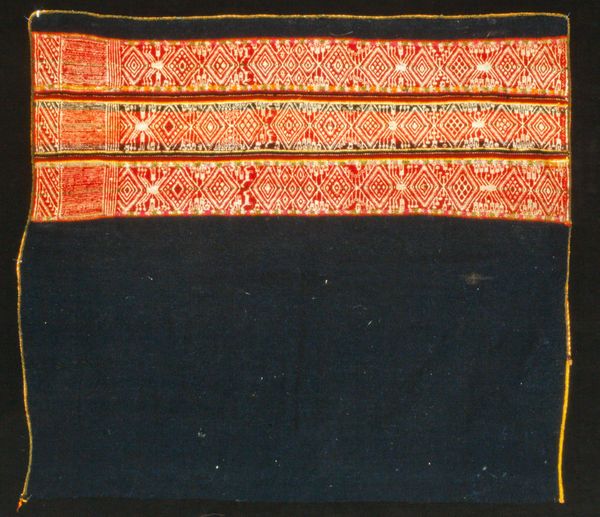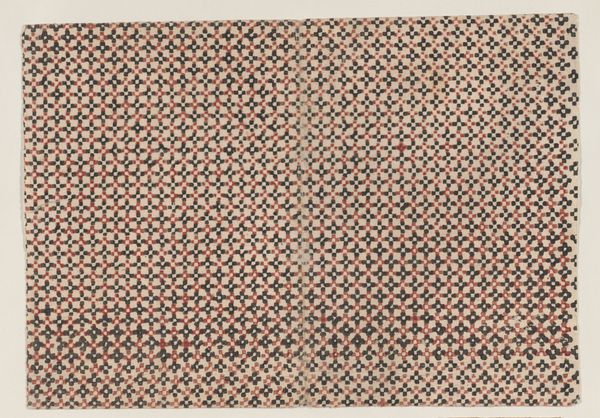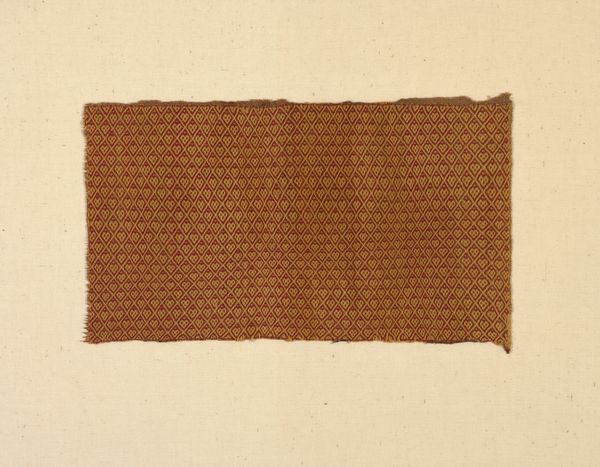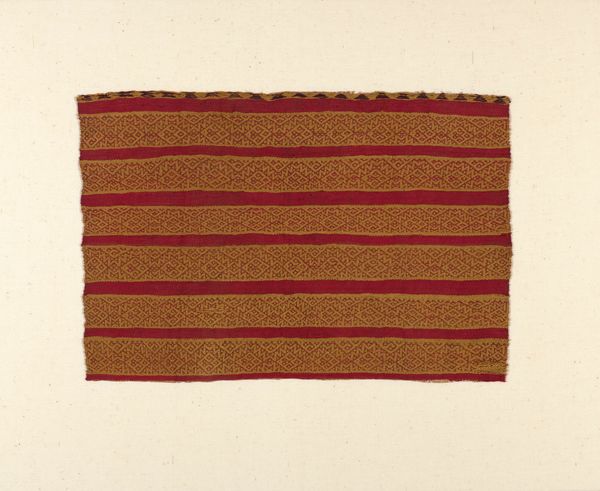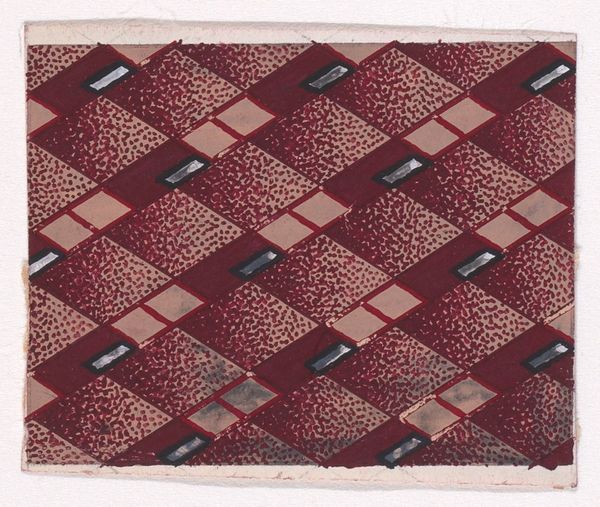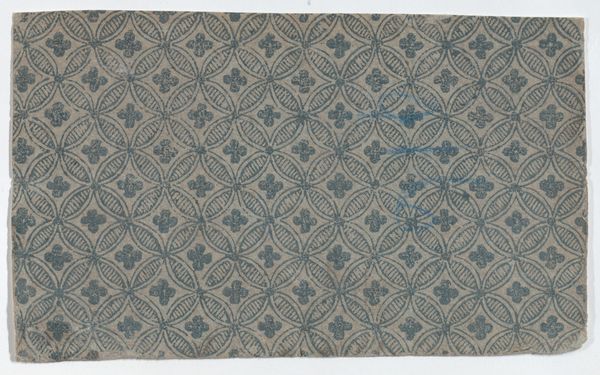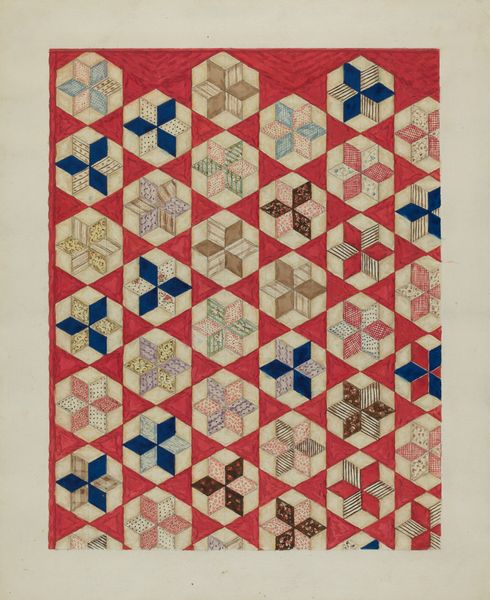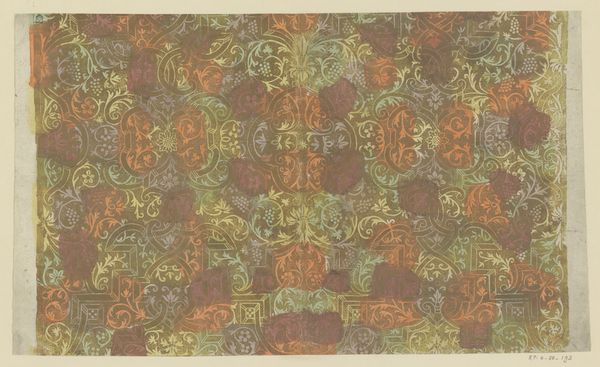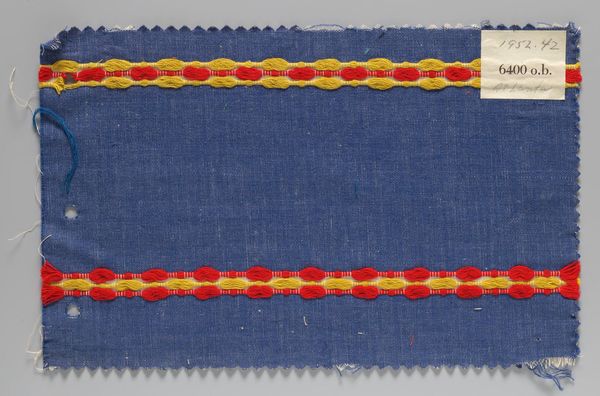
silk, textile
#
silk
#
textile
#
geometric
#
decorative-art
Dimensions: 127 1/2 x 25 in. (323.85 x 63.5 cm)
Copyright: Public Domain
Curator: Before us, we have a "Door Panel" believed to be crafted in the 19th century. The piece is currently held in the collection of the Minneapolis Institute of Art, featuring silk textile work with an array of geometric patterns. Editor: The repetition is striking. It gives a feeling of infinite, expanding space despite being confined by those solid red borders. It feels both comforting and slightly unsettling, like looking into a honeycomb. Curator: That’s interesting. You’re drawn to the effect of the central motif. From a historical perspective, door panels like this served not only a functional purpose in terms of privacy and insulation but also acted as a medium for expressing cultural values and status. Decorative arts, such as this panel, frequently signified wealth or specific cultural affiliations in domestic settings. Editor: It makes me think of protection, not only physically for what’s behind it, but symbolically. The repeated geometric design looks purposeful, perhaps warding off something through pattern. Curator: Symbolism indeed played a crucial role. These recurring motifs could indicate a family's social standing, region of origin, or spiritual beliefs. The material choice, being silk, suggests a higher social class that can afford such luxurious embellishments for even functional aspects of their dwellings. Editor: That red is so assertive, bordering almost on aggression. Against the complex golden matrix of circles, it establishes a stark boundary, emphasizing what's contained and what’s kept out. I wonder what threshold this panel once marked, both literally and metaphorically. Curator: And we have to consider the Western gaze when analyzing the meaning. The institutional act of displaying it in a museum removes it from its intended domestic context and puts it under scrutiny, assigning new layers of interpretation and value to it. This act itself plays into how decorative arts, like textiles, are viewed and consumed. Editor: Placing it here certainly encourages me to examine the artistry and imagine the lives that once existed within the space it adorned. Curator: Indeed, viewing this panel not just as an aesthetic object but as a fragment of socio-cultural history provides a much richer understanding. Editor: A reminder that even the seemingly mundane items of everyday life carry stories waiting to be unfolded.
Comments
No comments
Be the first to comment and join the conversation on the ultimate creative platform.

